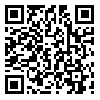Volume 17, Issue 6 (10-2018)
ijdld 2018, 17(6): 272-284 |
Back to browse issues page
Download citation:
BibTeX | RIS | EndNote | Medlars | ProCite | Reference Manager | RefWorks
Send citation to:



BibTeX | RIS | EndNote | Medlars | ProCite | Reference Manager | RefWorks
Send citation to:
Bakhtiari moghadam M, Shabaninejad H, Shams moatar A, Sarikhani M, Asgharzadeh A. INVESTIGATING THE EFFECT OF PROVIDING CARE THROUGH A TEXT MESSAGE OF A CELL PHONE IN COMPARISON WITH THE FACE-TO-FACE APPROACH FOR CONTROLLING BLOOD GLUCOSE (HBA1C) IN PATIENTS WITH TYPE 2 DIABETES: A SYSTEMATIC REVIEW AND ANALYSIS OF META-REGRESSION. ijdld 2018; 17 (6) :272-284
URL: http://ijdld.tums.ac.ir/article-1-5659-en.html
URL: http://ijdld.tums.ac.ir/article-1-5659-en.html
Mahdi Bakhtiari moghadam * 
 1, Hossein Shabaninejad2
1, Hossein Shabaninejad2 
 , Alireza Shams moatar3
, Alireza Shams moatar3 
 , Maryam Sarikhani4
, Maryam Sarikhani4 
 , Asra Asgharzadeh2
, Asra Asgharzadeh2 


 1, Hossein Shabaninejad2
1, Hossein Shabaninejad2 
 , Alireza Shams moatar3
, Alireza Shams moatar3 
 , Maryam Sarikhani4
, Maryam Sarikhani4 
 , Asra Asgharzadeh2
, Asra Asgharzadeh2 

1- Departments of Health Services Management, School of Health Management and Information Sciences, Iran University of Medical Sciences, Tehran, Iran , bakhtiary64@gmail.com
2- Departments of Health Services Management, School of Health Management and Information Sciences, Iran University of Medical Sciences, Tehran, Iran
3- Departments of Prevention of non-communicable diseases, Mazandaran University of Medical Sciences, , Mazandaran , Iran
4- Department of Economics, School of Health Management and Information Sciences, Shiraz University of Medical Sciences, Shiraz, Iran
2- Departments of Health Services Management, School of Health Management and Information Sciences, Iran University of Medical Sciences, Tehran, Iran
3- Departments of Prevention of non-communicable diseases, Mazandaran University of Medical Sciences, , Mazandaran , Iran
4- Department of Economics, School of Health Management and Information Sciences, Shiraz University of Medical Sciences, Shiraz, Iran
Abstract: (3668 Views)
Background: Effect of mobile text message on blood glucose (HbA1c) control in providing type 2 diabetes care (diabetes mellitus non insulin dependent).
Methods: The present study is a systematic review with meta-analysis. A search of the most important electronic medical databases of medical resources from December 1992 to January 2017 in a systematic manner, including: CRD, Ovid Medline, PubMed, Cochrane Library, and moreover, by referring to the resources found in the articles and manual search on the site. Related to this technology and, if necessary, contacting experts. All randomized clinical trials and cohort studies were reviewed.Results: Participants included nine studies (818), all randomized clinical trials, and quality assessment. The average decrease in Mobile SMS Services users compared to the control group (SMD-0.324, 95% CI, -0.526 to -0.121; I2 = 51.0). The analysis of subgroups showed that young patients are more likely to use diabetes programs, and the size of the effect increases with short intervals of interventions and the size of large samples.
Conclusion: Mobile SMS services may be considered as an effective component for helping control glycosylated hemoglobin and as a side intervention for the care of patients with type 2 diabetes.
Type of Study: Review |
Subject:
Special
Received: 2017/10/24 | Accepted: 2018/11/19 | Published: 2018/10/15
Received: 2017/10/24 | Accepted: 2018/11/19 | Published: 2018/10/15
Send email to the article author
| Rights and permissions | |
 |
This work is licensed under a Creative Commons Attribution-NonCommercial 4.0 International License. |



